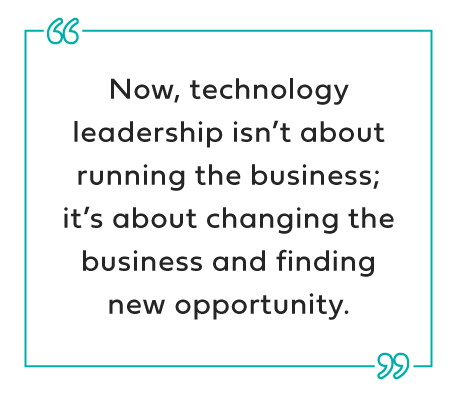The CIO’s hidden dependency (3 min read)

The average tenure of the enterprise CIO was 4.6 years1 … before the pandemic. Many expect that it will be even shorter as we emerge from the global crisis.
And as the new regime of IT leaders are taking office, one thing is very apparent … they are different. There are more MBAs. More profiles with P&L experience. They are more than just technologists … they are strategic business leaders with a charter to reshape the modern enterprise.
“The CIO role used to be defined as an operational position that would focus on efficiency and keeping the business running faster, cheaper, better, and safer,” says Martha Heller who leads a recruiting firm specializing in CIO leadership. “Now, technology leadership isn’t about running the business; it’s about changing the business and finding new opportunity.”
Great ideas or great systems?

New opportunities don’t always arise from amazing ideas. Often, they evolve and iterate to become great ideas. The reason that agile development frameworks took-off was because they were fast. Not in the literal sense of people working at a quicker pace, but fast because they enabled rapid adaptation. Flexibility.
This flexibility enables the quick discovery and resolution of problems that ultimately gets good products to market, and then turns good products into great ones.
Similarly, the new face of the CIO is an agile one. Flexible. Dynamic. Entrepreneurs able to identify issues early and then deploy resources appropriately to resolve them.
How do you scale almost infinitely? Address zero-day threats that change every day. Turn-up new applications in minutes. Integrate acquisitions in weeks.
You stay agile. Flexible.
Agile minds deploy flexible systems
But as we all know too well, it is incredibly difficult to drive the business into tomorrow when dealing with the never-ending, break-fix of yesterday. This becomes the Achilles heel for the CIO charged with transforming the business. His or her success is “all predicated on a company having an agile, modern architecture.”2
It is not surprising then that one of the first projects that top performing companies undertake is addressing the backbone of that flexibility: the network and security architecture.3 It underlays how the company operates. How it protects data or enables collaboration. It determines the employee’s on-line experience … which is now his or her only experience.
The CIO who wants to be agile and flexible needs the platform that already is agile and flexible. How long does that take? It depends. Working with a provider like Aryaka, changes could be in place in a matter of weeks. For those looking to build themselves, it’s likely around 4.6 years.
Check out how Aryaka helped some enterprises:
https://www.aryaka.com/about-us/proven-success/
https://www.aryaka.com/videos/specialty-chemicals-company-albemarle-on-the-benefits-of-aryaka/
1 Age and Tenure of the C-Suite, Korn Ferry https://bit.ly/3ssyyQ3
2,3 Business Leaders Take Aim at the CIO Role, CIO.com https://bit.ly/3hsCcTx
4 Organizing the Future: Nine Keys to Becoming a Future Ready Company https://mck.co/3IEdbRw
- Aryaka AppAssure
- Aryaka FlexCore
- Aryaka HybridWAN
- Aryaka Secure Web Gateway
- Aryaka Regional Solution Brief
- Aryaka SmartCDN
- Accelerate CAD/CAM Performance with SD-WAN
- Accelerate Salesforce Performance with SD-WAN
- Managed SD-WAN as a Service for 8x8 UCaaS
- Advantages of Cloud-First WAN Services
- Amazon Web services Acceleration







